Just a quick post today to let you know about one of our favourite blogs ainthardtotell.com that has all the latest industry gossip, goings on, prospects downloads and opinions. Keep checking it on a daily basis to get the latest action, links and updates.
Catch you soon
Friday 17 October 2008
Monday 13 October 2008
DJing Tips
Having trawled the net for days to try and summarise and show you guys some of the best clips, blogs and websites to cover from the basics to the most advance DJing skills, I am generally quite disappointed. Most websites have huge amounts of text with little visual to help reinforce the pages of text, plus for the non academic learner its a mountain of words that need translating into actions.
However this one covers the basics for beat matching, similarly the full DJing for dummies guide is also worth a look/purchase/download from a torrent.
Also worth checking out Sonic academy's you tube page here. Make sure you check all 8 lessons as they are good to reinforce most of the teaching points we have covered in lessons.
As you get better and want to experiment with some scratches then there are some good clips on you tube put up by Q-Bert and Scratch Perverts which covers the scratching basics.
However I strongly recommend that you spend time learning the beat matching skills and listening to your mixing to improve how you actually sound to the listener before going crazy on learning scratches. I found the best way is to keep recording yourself and listening back analysing what worked and what didn't and why. The hardest part about DJing and DJing well, is to establish what will contribute to the best mixing out of the speakers and not the headphones. For my beginners years, I was convinced I was doing amazing and having a great time in the headphones, but what was actually playing was the complete opposite and definitely not a crowd pleasing performance. So spend time recording yourself and learning how to correct your mixing skills. In my eyes, a good DJ only uses their headphones to cue, correct mixing mistakes at the beginning to then drop a tune and for the occasional reference during their mix.
Once you have learnt how to beat match/mix then look at some scratches, they have loads of variations and names, because scratching is basically an artform and used to demonstrate your 'style' and originally for battling, which is where turntablism, (the art and use of two turntables to create new forms of music and tricks with the equipment) derived from.
Check the clips below for some of the basic scratches:
There are loads of home made, learn DJing clips on you tube so feel free to search away, but none that I feel really break it down clearly and can be reinforced and easily learnt from other than the DJing for dummies guide, qberts how to scratch lessons and for the advanced learner the scratch perverts. As a result I have decided to give you some tips and a few links for the mean time, however we will also make some clips in the near future and put them on you tube with tips as well.
So for the mean time lets cover the basics:
DOWNLOAD OUR FREE DJING PDF
Turntable set up - RIGHT NOW MAKE A SOUND
Remembering this short little phrase will help you to understand how sound starts and travels through your set up, and also can be used to check and identify any areas along the way that is preventing sound from being heard.
Sound will start cut as a groove on your record which is then picked up by the needle, the needle takes the vibrations down the tone arm and progresses towards the mixer. At the mixer, provided that it is wired correctly, the sound will be fed into a channel strip and able to be controlled with either the gain, upfader and crossfader. The sound is then fed out from the mixer from a master output and an be fed to an amplifier. The amplifier will in turn make the sound louder which can then be fed to the speakers which finally turn the signal into an audible format which can be taken in by the human ear. Whilst this may appear simple, always checking this sound path will allow you to identify any errors and pin point where your sound will travel and be heard. You will be surprised with how simple errors will occur regularly along this path unless you check all five points regularly, especially before and after a mix.
RECORD - Right - Always check that the record is on the turntable the right way and that its turning at the correct speed (33, 45) with grooves available to be picked up by the stylus/needle.
NEEDLE - Now - Ensure that the needle isn't covered with dust, is still functioning and is ideally a diamond cut needle that can take being moved forwards and backwards. Also double check the obvious that its in the right place and on a vinyl that have grooves to be picked up.
MIXER - Make - Double check that you have connected the turntables/cdj's in the right ports (Turntables use phono inputs and CDJ's use the line inputs). Check that you have sufficient but not overloaded or peaking gain for each channel strip. Upfaders are used to control the volume of each channel during your mix. They are the DJ's mixing and fading tools and are used for fading sound in and out of the mix and can also be used for chopping between the two sources playing. The last area and one of the most important to check is the crossfader, always remember that the crossfader will play the sound that it ponits too. It is also the last part of the mixer that should be worked with to ensure that you have all the other areas sounding or cued correctly.
AMPLIFIER - A - This is the last point to check for power and levels. Try not to over amplify your sound either as this will blow your speakers if you are not careful. The last simple one to check is that your amplifier is turned on as well. Sounds obvious but is an easy one to forget.
SPEAKERS - Sound - Finally check your speakers are correctly plugged into your amp and are not blown. You will know if your speakers are blown as they will sound muffled and poor quality especially with certain frequencies.
LEARNING TO BEAT MATCH
I recommend using two identical tunes on vinyl if possible at the same tempo and practice looking for the 1 (the first beat on the record). Practice dropping the 1, once cued in the headphones, in time with the first beat of a bar on the record playing.
The next part is going to be the be all and end all of where you learn to understand and compute the beat matching element. You need to listen carefully to the cued mix in the headphones and determine whether you dropped it in time, correcting the beats so they play identically together. A simple key to follow is usually the snare drum, which can be heard if it plays early or late and then you will need to use either speeding (pushing the record forwards) or slowing (tapping or gently stopping the record) to help get both records back in time again.
Once you have got the basics of this, you need to then experiment with varied tempos to then use the pitch control to get the hang of applying speeding and slowing effectively. The following link is quite good both in terms of text and visually to help explain what you are doing physically and practically when you with the playing record. The main thing to process is that without touching on music production too much music is made at varying tempos. Stick to mixing identical genres to start off with.
Taking all this into consideration, when we mix, we need to create a universal tempo for both records to play at, in order to allow you the to play them both at the same time in time. The key to this is developing an 'ear' to hear which record is fast or slow and learning how to use your DJing equipment to help correct the errors. The pitch control affects the speed at which the record plays at, so this is the main tool that can be used to help match tempos of the two records, based on whether you are speeding or slowing.
There are hundreds of theories and practices that speculate how to master the pitch control quickly, however, probably the fairest statement to make is that you should move the pitch control according to how much you have to keep correcting the record with speeding and slowing. I use the principle that if the beat falls out in less than half a bar, I move at least 4 notches on the pitch control accordingly. If it falls out in a bar, then I move 2 notches and anything up to 4 bars then 1 notch, however this isn't a proven legend, it's just what works for me. It is important to keep finding the 1 again and dropping it in time to ensure that you can hear the changes and make adjustments accordingly with the pitch again.
MIXING SKILLS
Fade cuts - Probably the simplest cut to use when mixing is the fading of the old record out whilst the new record plays. Once beat matched, bring the new tune in using the cross fader and when you feel appropriate begin fading the previous record out using the upfader over a minimum of 2 bars.
Stop Cut - Really simple, whilst playing both records together, press the stop button on the record that you no longer wish to play on a 1. For the more advanced sound, use either the crossfader or the upfader to capture the stop and then chop back to the mix.
Spin back - The spin back is one of the trademark DJ sounds. Its simple to pull off, but requires concise actions with your equipment otherwise you'll end up with a mess of sound playing. Again once both tunes are mixed and beat matched and playing together simply throw the record that you no longer want to hear backwards and then cut with the cross fader to the remaining tune. Be sure to get this right otherwise you will end up playing a record that you don't want to hear or begin playing aloud a no longer wanted and non beat matched mix. However when pulled off correctly sounds great!
Chop mixing - The chop mix can be used to tease the crowd with whats in store and works really well with faster dance music. Again once cued and beat matched use either the cross fader or the up faders to chop between the two
Drop mixing - Drop mixing is the DJ's essential cut to change from one music genre to another, similarly it can be used effectively if you are struggling to beat match and need to change to another tune to the begin beat matching a new mix. Simply cue your new tune using your headphones and place the cross fader in the middle and press stop button on the tune that you no longer want to play, letting go of the new record to start the new tune playing.
EQ mixing - The EQ buttons on the mixer can be used for capturing different frequencies in a tune. Typically you should have a hi, mid and low frequency to play with which can be used to boost (increase) or cut (remove) these frequencies. When used correctly you can use these to boost the bass line on record A and the hi's and mid's on record B. If done correctly then you should create a new sounding mix with the two tunes. It will be useful to know both tunes well and plan how you wish to use what elements of each tunes to boost or kill.
I will continue to drop more hints and tips over the next few months but this should suffice for the mean time.
Catch you soon
However this one covers the basics for beat matching, similarly the full DJing for dummies guide is also worth a look/purchase/download from a torrent.
Also worth checking out Sonic academy's you tube page here. Make sure you check all 8 lessons as they are good to reinforce most of the teaching points we have covered in lessons.
As you get better and want to experiment with some scratches then there are some good clips on you tube put up by Q-Bert and Scratch Perverts which covers the scratching basics.
However I strongly recommend that you spend time learning the beat matching skills and listening to your mixing to improve how you actually sound to the listener before going crazy on learning scratches. I found the best way is to keep recording yourself and listening back analysing what worked and what didn't and why. The hardest part about DJing and DJing well, is to establish what will contribute to the best mixing out of the speakers and not the headphones. For my beginners years, I was convinced I was doing amazing and having a great time in the headphones, but what was actually playing was the complete opposite and definitely not a crowd pleasing performance. So spend time recording yourself and learning how to correct your mixing skills. In my eyes, a good DJ only uses their headphones to cue, correct mixing mistakes at the beginning to then drop a tune and for the occasional reference during their mix.
Once you have learnt how to beat match/mix then look at some scratches, they have loads of variations and names, because scratching is basically an artform and used to demonstrate your 'style' and originally for battling, which is where turntablism, (the art and use of two turntables to create new forms of music and tricks with the equipment) derived from.
Check the clips below for some of the basic scratches:
There are loads of home made, learn DJing clips on you tube so feel free to search away, but none that I feel really break it down clearly and can be reinforced and easily learnt from other than the DJing for dummies guide, qberts how to scratch lessons and for the advanced learner the scratch perverts. As a result I have decided to give you some tips and a few links for the mean time, however we will also make some clips in the near future and put them on you tube with tips as well.
So for the mean time lets cover the basics:
DOWNLOAD OUR FREE DJING PDF
Turntable set up - RIGHT NOW MAKE A SOUND
Remembering this short little phrase will help you to understand how sound starts and travels through your set up, and also can be used to check and identify any areas along the way that is preventing sound from being heard.
Sound will start cut as a groove on your record which is then picked up by the needle, the needle takes the vibrations down the tone arm and progresses towards the mixer. At the mixer, provided that it is wired correctly, the sound will be fed into a channel strip and able to be controlled with either the gain, upfader and crossfader. The sound is then fed out from the mixer from a master output and an be fed to an amplifier. The amplifier will in turn make the sound louder which can then be fed to the speakers which finally turn the signal into an audible format which can be taken in by the human ear. Whilst this may appear simple, always checking this sound path will allow you to identify any errors and pin point where your sound will travel and be heard. You will be surprised with how simple errors will occur regularly along this path unless you check all five points regularly, especially before and after a mix.
RECORD - Right - Always check that the record is on the turntable the right way and that its turning at the correct speed (33, 45) with grooves available to be picked up by the stylus/needle.
NEEDLE - Now - Ensure that the needle isn't covered with dust, is still functioning and is ideally a diamond cut needle that can take being moved forwards and backwards. Also double check the obvious that its in the right place and on a vinyl that have grooves to be picked up.
MIXER - Make - Double check that you have connected the turntables/cdj's in the right ports (Turntables use phono inputs and CDJ's use the line inputs). Check that you have sufficient but not overloaded or peaking gain for each channel strip. Upfaders are used to control the volume of each channel during your mix. They are the DJ's mixing and fading tools and are used for fading sound in and out of the mix and can also be used for chopping between the two sources playing. The last area and one of the most important to check is the crossfader, always remember that the crossfader will play the sound that it ponits too. It is also the last part of the mixer that should be worked with to ensure that you have all the other areas sounding or cued correctly.
AMPLIFIER - A - This is the last point to check for power and levels. Try not to over amplify your sound either as this will blow your speakers if you are not careful. The last simple one to check is that your amplifier is turned on as well. Sounds obvious but is an easy one to forget.
SPEAKERS - Sound - Finally check your speakers are correctly plugged into your amp and are not blown. You will know if your speakers are blown as they will sound muffled and poor quality especially with certain frequencies.
LEARNING TO BEAT MATCH
I recommend using two identical tunes on vinyl if possible at the same tempo and practice looking for the 1 (the first beat on the record). Practice dropping the 1, once cued in the headphones, in time with the first beat of a bar on the record playing.
The next part is going to be the be all and end all of where you learn to understand and compute the beat matching element. You need to listen carefully to the cued mix in the headphones and determine whether you dropped it in time, correcting the beats so they play identically together. A simple key to follow is usually the snare drum, which can be heard if it plays early or late and then you will need to use either speeding (pushing the record forwards) or slowing (tapping or gently stopping the record) to help get both records back in time again.
Once you have got the basics of this, you need to then experiment with varied tempos to then use the pitch control to get the hang of applying speeding and slowing effectively. The following link is quite good both in terms of text and visually to help explain what you are doing physically and practically when you with the playing record. The main thing to process is that without touching on music production too much music is made at varying tempos. Stick to mixing identical genres to start off with.
Taking all this into consideration, when we mix, we need to create a universal tempo for both records to play at, in order to allow you the to play them both at the same time in time. The key to this is developing an 'ear' to hear which record is fast or slow and learning how to use your DJing equipment to help correct the errors. The pitch control affects the speed at which the record plays at, so this is the main tool that can be used to help match tempos of the two records, based on whether you are speeding or slowing.
There are hundreds of theories and practices that speculate how to master the pitch control quickly, however, probably the fairest statement to make is that you should move the pitch control according to how much you have to keep correcting the record with speeding and slowing. I use the principle that if the beat falls out in less than half a bar, I move at least 4 notches on the pitch control accordingly. If it falls out in a bar, then I move 2 notches and anything up to 4 bars then 1 notch, however this isn't a proven legend, it's just what works for me. It is important to keep finding the 1 again and dropping it in time to ensure that you can hear the changes and make adjustments accordingly with the pitch again.
MIXING SKILLS
Fade cuts - Probably the simplest cut to use when mixing is the fading of the old record out whilst the new record plays. Once beat matched, bring the new tune in using the cross fader and when you feel appropriate begin fading the previous record out using the upfader over a minimum of 2 bars.
Stop Cut - Really simple, whilst playing both records together, press the stop button on the record that you no longer wish to play on a 1. For the more advanced sound, use either the crossfader or the upfader to capture the stop and then chop back to the mix.
Spin back - The spin back is one of the trademark DJ sounds. Its simple to pull off, but requires concise actions with your equipment otherwise you'll end up with a mess of sound playing. Again once both tunes are mixed and beat matched and playing together simply throw the record that you no longer want to hear backwards and then cut with the cross fader to the remaining tune. Be sure to get this right otherwise you will end up playing a record that you don't want to hear or begin playing aloud a no longer wanted and non beat matched mix. However when pulled off correctly sounds great!
Chop mixing - The chop mix can be used to tease the crowd with whats in store and works really well with faster dance music. Again once cued and beat matched use either the cross fader or the up faders to chop between the two
Drop mixing - Drop mixing is the DJ's essential cut to change from one music genre to another, similarly it can be used effectively if you are struggling to beat match and need to change to another tune to the begin beat matching a new mix. Simply cue your new tune using your headphones and place the cross fader in the middle and press stop button on the tune that you no longer want to play, letting go of the new record to start the new tune playing.
EQ mixing - The EQ buttons on the mixer can be used for capturing different frequencies in a tune. Typically you should have a hi, mid and low frequency to play with which can be used to boost (increase) or cut (remove) these frequencies. When used correctly you can use these to boost the bass line on record A and the hi's and mid's on record B. If done correctly then you should create a new sounding mix with the two tunes. It will be useful to know both tunes well and plan how you wish to use what elements of each tunes to boost or kill.
I will continue to drop more hints and tips over the next few months but this should suffice for the mean time.
Catch you soon
Labels:
beat matching,
beat mixing,
DJ Blog,
DJ Tips,
DJing,
How to scratch,
scratching
ST MUNGOS RE-OPENS
Longstanding clients ST MUNGOS have reopened their new hostel at Endell St again, after closing for over a year and a half to refurbish and renovate the Hostel. The new site offers a massive open plan foyer, library and IT suite and a brand new recording studio in additoin to the 5 floors of renovated rooms for residents.
Having been involved with St Mungos since June 2004, we have delivered a variety of workshops to a number of clients at various hostels and are pleased to be sitting alongside their new music programme developed at the Endell St site to help cater for homeless folk within the London borough of Camden.
The pics below are of the latest workshop where the Gold Seal team put on a 2 hour workshop in the foyer of Endell St, where residents and users of the day facilities at the hostel welcomed the tuition. All at Endell St now look forward to the completion of the garden room where the turntables and a copy of DJing software Serato will be left for residents to use at their leisure utilising the Gold Seal workshops.
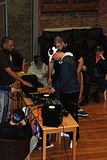
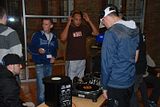
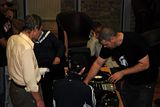
Keep checking the blog to catch the latest progression with Mungos and Gold Seal.
Having been involved with St Mungos since June 2004, we have delivered a variety of workshops to a number of clients at various hostels and are pleased to be sitting alongside their new music programme developed at the Endell St site to help cater for homeless folk within the London borough of Camden.
The pics below are of the latest workshop where the Gold Seal team put on a 2 hour workshop in the foyer of Endell St, where residents and users of the day facilities at the hostel welcomed the tuition. All at Endell St now look forward to the completion of the garden room where the turntables and a copy of DJing software Serato will be left for residents to use at their leisure utilising the Gold Seal workshops.



Keep checking the blog to catch the latest progression with Mungos and Gold Seal.
Tuesday 7 October 2008
SOME PRODUCERS TO CHECK NOW!!!
SAMPLING KING: BOON DOC
For those of you just getting up to speed on some of the lingo, sampling is the process of recording sound/audio onto a storage device that will allow you to manipulate and edit the final sound accordingly. To keep it simple and make it easy to identify its the basis of these sped up vocals that appear in a lot of music today. Its also a really useful tool for those who struggle with writing music or hear something and want to remix it as you can just record something and then use it in snippets to then make your music from.
If your into sampling and want to catch a few extra tips and tricks check out this guy BOON DOC and see how he uses the MPC 1000 to capture his favourite drums sounds and old skool soul artists to make some new fire for the new skool. I've recommended him and his tips and tricks for over a year to all my students, so have a look at my favourtie vids below and check his myspace here and his you tube page here.
Check his live drumming skills in this clip
He then adds a band around him and his drums.
Check out the rhythm weaver too, he uses the MPC 2500 but is very crafted in the samples he chooses:
EKLiPZ is a beast in the making too, check him out at his You tube right here.
Finally a must see for the old school hip hop heads and production geeks - Dead Presidents is put together again for you all with producer Ski Beatz
MUSICAL MAESTRO: RYAN TEDDER
This guy is unbelievable, there are so many styles to choose from that he covers not to mention writing music that sounds like it should be a sample itself. I found him randomly on a your tube search about 6 months ago and I'm hooked.
He is a classic example of how using musical scales and chords makes simple but effective music. The more you get into music the more you should really look at what makes a musician a musician and how to apply those skills in a technology environment. All of his music he lays a simple basis and then uses the correct chords and scales accordingly to add layers. Finally he puts the icing on the cake with the drums or simple melodies. Check out these vids for some inspiration and his full you tube page is available here.
Other top producers worth checking online are as follows:
Pete Rock
Just Blaze
Heatmakerz
Unfortunately and to remain honest for our followers, I will hold my hands up and admit that I am a little biased with the urban producers, however, for a more informative overview of how to use an mpc check here, similarly for some cool musical tips check here and type music in the search, they cover everything from writing music to preparing a home studio, mixing, mastering, promoting your music and learning to DJ.
In the next few posts we will give you the Gold Seal golden tips around similar subjects with some footage to reinforce what is being taught and to help all learning styles. For those that want to improve their music writing skills and keyboard skills check this clip too, you may need to do some additional research using google etc into chords and scales to fully understand it but it helps you to get the picture.
Enjoy and catch you real soon.
For those of you just getting up to speed on some of the lingo, sampling is the process of recording sound/audio onto a storage device that will allow you to manipulate and edit the final sound accordingly. To keep it simple and make it easy to identify its the basis of these sped up vocals that appear in a lot of music today. Its also a really useful tool for those who struggle with writing music or hear something and want to remix it as you can just record something and then use it in snippets to then make your music from.
If your into sampling and want to catch a few extra tips and tricks check out this guy BOON DOC and see how he uses the MPC 1000 to capture his favourite drums sounds and old skool soul artists to make some new fire for the new skool. I've recommended him and his tips and tricks for over a year to all my students, so have a look at my favourtie vids below and check his myspace here and his you tube page here.
Check his live drumming skills in this clip
He then adds a band around him and his drums.
Check out the rhythm weaver too, he uses the MPC 2500 but is very crafted in the samples he chooses:
EKLiPZ is a beast in the making too, check him out at his You tube right here.
Finally a must see for the old school hip hop heads and production geeks - Dead Presidents is put together again for you all with producer Ski Beatz
MUSICAL MAESTRO: RYAN TEDDER
This guy is unbelievable, there are so many styles to choose from that he covers not to mention writing music that sounds like it should be a sample itself. I found him randomly on a your tube search about 6 months ago and I'm hooked.
He is a classic example of how using musical scales and chords makes simple but effective music. The more you get into music the more you should really look at what makes a musician a musician and how to apply those skills in a technology environment. All of his music he lays a simple basis and then uses the correct chords and scales accordingly to add layers. Finally he puts the icing on the cake with the drums or simple melodies. Check out these vids for some inspiration and his full you tube page is available here.
Other top producers worth checking online are as follows:
Pete Rock
Just Blaze
Heatmakerz
Unfortunately and to remain honest for our followers, I will hold my hands up and admit that I am a little biased with the urban producers, however, for a more informative overview of how to use an mpc check here, similarly for some cool musical tips check here and type music in the search, they cover everything from writing music to preparing a home studio, mixing, mastering, promoting your music and learning to DJ.
In the next few posts we will give you the Gold Seal golden tips around similar subjects with some footage to reinforce what is being taught and to help all learning styles. For those that want to improve their music writing skills and keyboard skills check this clip too, you may need to do some additional research using google etc into chords and scales to fully understand it but it helps you to get the picture.
Enjoy and catch you real soon.
Monday 6 October 2008
What have we been up to?
OK, so just to let you know what has happened over the years, 2004 we finish building the studio and open some local community workshops for people in Hammersmith & Fulham and Kensington & Chelsea to check out the new facilities.

The workshops are a huge success and we begin working with London's largest homeless charity St Mungos. DJing and music production goes down a huge success and more workshops spiral from here reaching 5 other st mungos sites.
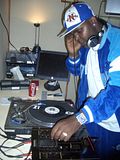
We register as an independent college and open as an AQA unit award scheme centre developing specific units to cover Reason, FL studio, Akai's mpc and djing units supported by Stanton.
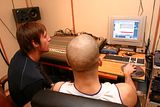
There is a huge uptake from local youth offending team in Kensington and Chelsea with help from top UK music producer Skillioso. Word spreads fast and we begin working with Southwark, Ealing, Hammersmith & Fulham and Westminster as well.
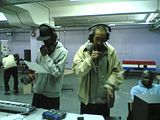
Our reputation for being peoples people grows and we begin work with TCW in brick lane and are invited to host the MIM music stand at Plasa and London Calling.

Workshops go from strength to strength and we have some top achievers gaining a range of qualifications with some great statistics generated for our young offenders. 66.7% dont reoffend and 75% of those remain in full time education.


We begin help Southwark install a mobile music studio set up at their base in south London with huge uptake and some great workshops that have followed since.

Top UK DJ One Samurai and Jump Off host Ben Scarrs join the team to deliver workshops. See below Samurai with UK urban act Sway at Childrens trust NCH workshop in west Drayton.


Our undercover act 3Face comes to the limelight and starts to help with vocal workshops with some of our top students.
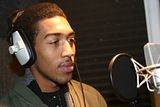

Work with our homeless client base spreads and we begin working with Singles Homeless Project in Kings Cross delivering DJing workshops.

DJing specialists Stanton help us purchase and install an mp3 Djing package for Haggerston Youth Inclusion Project. One Samurai helps with the open day and top Grime DJ, Kiss 100's Logan Sama comes down to help close the 24 lesson course.
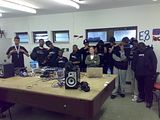
We have a busy Summer featuring at the south London connexions open day, hosted at top London Club Minstry of Sound. The Gold Seal project stand features top Grime producer and Hoodstars CEO - Werewolf helping all that enter with FL studio production. The stand is the most attended stand and interest for the borough begins to flourish.


We are also invited to Hammersmith & Fulham's Urban Arena held at the Linford Chistie stadium where young hoodstars MC Nightmare/Nitro joins us to help give some music skills back to the local community. The stand is heavily attended all day and the word of the Gold Seal Gospel spreads again.

October 07 sees top UK urban acts Wretch 32 & Bashy help open Richmond Adolescent Resource Team's Strathmore centre studio that Gold Seal have helped advise and fit for young people.


November approaches and Wretch 32 returns to help open the new music suite at Kensington & Chelsea's Rugby Portobello Trust.
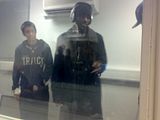
Christmas is upon us and for the 2nd year in succession the stats for our work with young offenders remains at 66.7% for those who don't re-offend and again 75% of those stay in full time education.
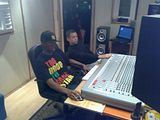
The start of a new year and we begin working with Haggerston Youth Inclusion Project again, this time delivering some music technology courses that help young people to learn about making some beats and recording some vocals.

We progress into march and the project begins to conclude the work with specialised education centre, St Marks DPU. Gold Seal engage 3 young people and issue qualifications to young people that have never engaged in any form of education since the age of 10. Sadly we loose young person Jay Tamer who was tragicly passed away in a car accident. Our thoughts remain with his friends and family and may he rest in peace.

We also begin working with Holborn Community Centre helping young people increase their leisure activities during half term activities.

The summer period beckons again and new courses begin with Richmond Adolescent Resource Team at the Strathmore centre. The course holds new talent and welcomes the old talent in an open mic session to get the ball rolling again.
New courses funded by PAYP are put in place to help young people involved in crime and poor living conditions begin at the Rugby Portobello Trust, where 9 of the most motivated and dedicated students went on to achieve 3 units in music production and recording vocals.
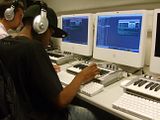
As the summer calls, Haggerson Youth Inclusion Project are set to begin some more DJing workshops again and Gold Seal bring down top UK 1xtra DJ DJ B, to help set the standard and have a question and answer session for the boroughs budding young DJ's.
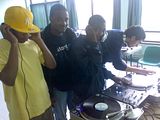
As autumn 2008 is upon us, Gold Seal send top grime acts Jammer and Bless Beats to perform for the Strathmore Centre, as part of their celebrations for Black History Month. Workshops continue to spring up left right and centre and we are proud of the work that we do to help make a difference to those who need it.
Keep reading to find the latest events and tips and tricks

The workshops are a huge success and we begin working with London's largest homeless charity St Mungos. DJing and music production goes down a huge success and more workshops spiral from here reaching 5 other st mungos sites.

We register as an independent college and open as an AQA unit award scheme centre developing specific units to cover Reason, FL studio, Akai's mpc and djing units supported by Stanton.

There is a huge uptake from local youth offending team in Kensington and Chelsea with help from top UK music producer Skillioso. Word spreads fast and we begin working with Southwark, Ealing, Hammersmith & Fulham and Westminster as well.

Our reputation for being peoples people grows and we begin work with TCW in brick lane and are invited to host the MIM music stand at Plasa and London Calling.

Workshops go from strength to strength and we have some top achievers gaining a range of qualifications with some great statistics generated for our young offenders. 66.7% dont reoffend and 75% of those remain in full time education.


We begin help Southwark install a mobile music studio set up at their base in south London with huge uptake and some great workshops that have followed since.

Top UK DJ One Samurai and Jump Off host Ben Scarrs join the team to deliver workshops. See below Samurai with UK urban act Sway at Childrens trust NCH workshop in west Drayton.


Our undercover act 3Face comes to the limelight and starts to help with vocal workshops with some of our top students.


Work with our homeless client base spreads and we begin working with Singles Homeless Project in Kings Cross delivering DJing workshops.

DJing specialists Stanton help us purchase and install an mp3 Djing package for Haggerston Youth Inclusion Project. One Samurai helps with the open day and top Grime DJ, Kiss 100's Logan Sama comes down to help close the 24 lesson course.

We have a busy Summer featuring at the south London connexions open day, hosted at top London Club Minstry of Sound. The Gold Seal project stand features top Grime producer and Hoodstars CEO - Werewolf helping all that enter with FL studio production. The stand is the most attended stand and interest for the borough begins to flourish.


We are also invited to Hammersmith & Fulham's Urban Arena held at the Linford Chistie stadium where young hoodstars MC Nightmare/Nitro joins us to help give some music skills back to the local community. The stand is heavily attended all day and the word of the Gold Seal Gospel spreads again.

October 07 sees top UK urban acts Wretch 32 & Bashy help open Richmond Adolescent Resource Team's Strathmore centre studio that Gold Seal have helped advise and fit for young people.


November approaches and Wretch 32 returns to help open the new music suite at Kensington & Chelsea's Rugby Portobello Trust.

Christmas is upon us and for the 2nd year in succession the stats for our work with young offenders remains at 66.7% for those who don't re-offend and again 75% of those stay in full time education.

The start of a new year and we begin working with Haggerston Youth Inclusion Project again, this time delivering some music technology courses that help young people to learn about making some beats and recording some vocals.

We progress into march and the project begins to conclude the work with specialised education centre, St Marks DPU. Gold Seal engage 3 young people and issue qualifications to young people that have never engaged in any form of education since the age of 10. Sadly we loose young person Jay Tamer who was tragicly passed away in a car accident. Our thoughts remain with his friends and family and may he rest in peace.

We also begin working with Holborn Community Centre helping young people increase their leisure activities during half term activities.

The summer period beckons again and new courses begin with Richmond Adolescent Resource Team at the Strathmore centre. The course holds new talent and welcomes the old talent in an open mic session to get the ball rolling again.
New courses funded by PAYP are put in place to help young people involved in crime and poor living conditions begin at the Rugby Portobello Trust, where 9 of the most motivated and dedicated students went on to achieve 3 units in music production and recording vocals.

As the summer calls, Haggerson Youth Inclusion Project are set to begin some more DJing workshops again and Gold Seal bring down top UK 1xtra DJ DJ B, to help set the standard and have a question and answer session for the boroughs budding young DJ's.

As autumn 2008 is upon us, Gold Seal send top grime acts Jammer and Bless Beats to perform for the Strathmore Centre, as part of their celebrations for Black History Month. Workshops continue to spring up left right and centre and we are proud of the work that we do to help make a difference to those who need it.
Keep reading to find the latest events and tips and tricks
Labels:
3 Face,
bashy,
bless beats,
DJ B,
Gold Seal Project,
Grime,
HIPHOP,
jammer,
music production,
music technology tips,
One Smaurai,
PAYP,
underground,
wretch 32
Thursday 2 October 2008
Welcome
The Gold Seal Project is London's most dedicated music educator. We have been working with all walks of life from all over the City since 2004 and now work in most of the London boroughs in one way or another. This blog is set up for all we encounter to keep a day to day tab on what we do, what we have in the pipeline and want our students and friend to check out and remember too.
From private tuition, through to after school activities, to those who may just want to see what we do, you need to keep a daily track on what we have to say as this will hopefully help you to progress as a musician and also check out what is going on in the city to help develop your art form. Subscribe now and get all of your people behind us as we want to give you the truth and the correct tools and tips to get to where you want to go.
If you are interested in blogging with us drop us a mail and we'll hook you up with an account if we see fit.
In the mean time check out our monthly top 10 player for our top students and music projects currently running and needing ratings.
Catch you real soon
From private tuition, through to after school activities, to those who may just want to see what we do, you need to keep a daily track on what we have to say as this will hopefully help you to progress as a musician and also check out what is going on in the city to help develop your art form. Subscribe now and get all of your people behind us as we want to give you the truth and the correct tools and tips to get to where you want to go.
If you are interested in blogging with us drop us a mail and we'll hook you up with an account if we see fit.
In the mean time check out our monthly top 10 player for our top students and music projects currently running and needing ratings.
Catch you real soon
Subscribe to:
Posts (Atom)



